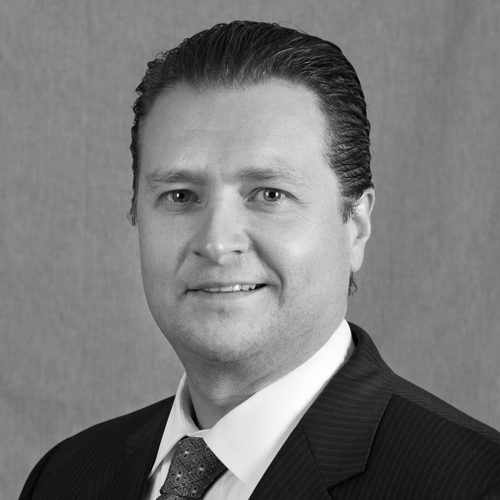As a New York Stock Exchange (NYSE) listed public company, RPM International is required to have a code of business conduct and ethics—but with 11,000 employees spanning fifty operating companies across twenty-four countries, the manufacturer of consumer favorites such as Rust-Oleum, Zinsser, DAP, and industrial brands such as Tremco, Stonhard, and Carboline faced an uphill battle in communicating the code.
Because a code of business conduct and ethics was a NYSE requirement, the company did have one—it just wasn’t ideal. “It focused on our four core policies, but we wanted to find a way to distill and communicate them to our broad audience without using the legalese employees would be inclined to ignore,” says Ed Moore, senior vice president, general counsel, and chief compliance officer. Moore led the effort to develop the new code.
“We need to be conscious of the number of hours in the week so we ensure we’re doing the right things, the right way, for the right reasons.”
Called The Values and Expectations of 168, the code is named after RPM International’s founder’s favorite number, 168, which refers to twenty-four hours a day, seven days a week. “He firmly believed that life is a gift, and we have limited time to do things,” Moore says. “So we need to be conscious of the number of hours in the week so we ensure we’re doing the right things, the right way, for the right reasons.”
It clearly distills what the company values and expects. Consider the messages in the code’s handbook. There’s integrity: “Be open and honest. Accurately and openly disclose information in business transactions. Deception and retaliation have no place at RPM and will not be tolerated.” There’s commitment: “Follow the law, our policies and procedures. Safeguard our companies’ property, assets, and interests, and ensure the focus is on the collective goals of shareholders, employees, customers, consumers, and communities.” There’s responsible entrepreneurship: “Search for innovative ways to compete and win in the markets we serve. Compete vigorously, but always do so fairly and in adherence to free enterprise and competition standards, environmental and human rights principles, and with respect for our customers, competitors and the communities in which we operate.” And there’s moral courage: “Do the right thing, even when it is tough, and regardless of whether someone is watching or if you will receive credit.”
In putting together The Values and Expectations of 168, Moore and his team—which included Tracy Crandall, associate general counsel, and Arturo Hernandez, director of global compliance—used hypotheticals and real-life examples that would help employees make decisions properly, as well as graphics people could connect with. “We thought that would be a better way to communicate than a black and white Word document listing the policies employees have to comply with,” says Moore of the program, which rolled out in 2014.
As an example, Moore points to the first hypothetical in the booklet: “Every year, my supervisor sets higher goals, and she tells us to do whatever it takes to meet them. What do I do?” The answer, he says, is that as responsible entrepreneurial leaders, employees have an obligation to continuously seek better ways to compete and develop the products in a manner that best serves customers’ needs—but they should never compromise their values to reach organizational goals. “No one may make statements or take actions that are intended to violate a law or our values, and you should never accept any statement as directing you to do so,” the text reads. “If anyone ever directs you to deviate from our values and expectations, regardless of who it is or how strong the external pressures may seem, you have an obligation not to take the requested action and to report that conduct.”
Many of the examples are practical. “I need to move my furniture from my residence to a storage facility, just a couple of miles away. Would using the company truck for this short trip be considered incidental use?” (The answer is no.) “I’m on lunch break, and I want to use my computer to buy flowers for my spouse. Can I do that?” (The answer is yes, if your operating company allows this type of incidental use.) “I’m leaving the company and starting my own coatings and sealants business. When I’m gone, can I use the product formulas I learned to create my own products?” (The answer is no.) “But what if I invented the formula?” (The answer is no, as the formula was invented as a part of the employee’s work for the company, and therefore, the company owns all right to it.)
“We know it’s working because we’re getting reports from employees who say they knew they could come forward and tell us about suspected misconduct.”
After creating the content and getting code of conduct into a format that would be easily understandable, the challenge was making sure senior management actually read it. “We didn’t want people at the top who didn’t buy into it,” Moore says. “So we spent a lot of time with the board of directors and group presidents, ensuring they understood what we were saying.”
While Moore, Crandall, and Hernandez worked on the content of the code of conduct together, Hernandez was particularly instrumental in its rollout, Moore says—and getting the code implemented wasn’t easy. The team started from the top down, first training RPM International’s board of directors, then moving on to the management of its six operating companies, specifically the presidents, compliance directors, and general counsel. “We recognized that we couldn’t do face-to-face training for everyone,” Moore says. “So we created an online module with an introduction from our CEO followed by hypothetical questions, and we worked with senior management to communicate the Values and Expectations of 168 down to their organizations.” He notes that Hernandez was well suited to the role because of his background as an assistant US attorney and a lieutenant colonial in the Marine Corps. “Having worked in the public sphere, including serving a tour of duty in Iraq, he’s uniquely qualified to do training because of his leadership skills,” Moore says.
Today, the thirty-five-page code of conduct has been translated into more than twenty languages, and is a success by many measures. “We have an internal audit group, which, when they audit our operating companies, ensures that the hotline posters are up, employees have the new code, and training has been held,” Moore says. “But that’s just checking the box. We know it’s working because we’re getting reports from employees who say they knew they could come forward and tell us about suspected misconduct because of The Values and Expectations of 168.”

